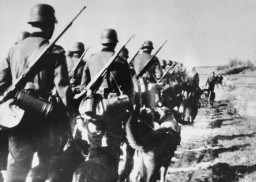You searched for: 存币生息系统定制开发【TG���������@EK7676】平台包网搭建存币生息系统定制开发【TG���������@EK7676】平台包网搭建7ZcKfeL1Bf
<< Previous | Displaying results 51-100 of 245 for "存币生息系统定制开发【TG���������@EK7676】平台包网搭建存币生息系统定制开发【TG���������@EK7676】平台包网搭建7ZcKfeL1Bf" | Next >>
-
8th Infantry troops approach a town in Belgium
PhotoUS soldiers of the 8th Infantry Regiment seek cover behind hedges and signs to return fire to German forces holding the town of Libin. Belgium, September 7, 1944.
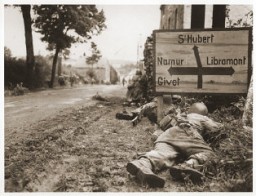
-
Burying the victims of Wöbbelin
PhotoAfter the liberation of the Wöbbelin camp, US troops forced the townspeople of Ludwigslust to bury the bodies of prisoners killed in the camp. This photograph shows German civilians who were ordered to bury the dead; US troops stand in the background. Germany, May 7, 1945
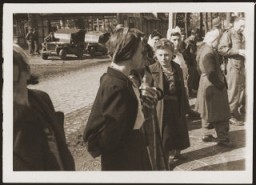
-
Captured German soldiers remove bodies from a barracks in Gunskirchen
PhotoMedical corpsmen of the US 71st Infantry Division, 3rd US Army look on as captured German soldiers remove bodies from inside a barracks in Gunskirchen. In the foreground, a Jewish girl lies huddled in the straw on the floor of the barracks. Gunskirchen, Austria, May 7, 1945.
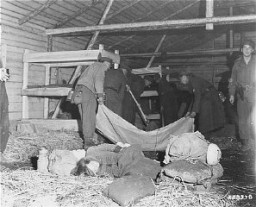
-
Hannah Szenes
PhotoHannah Szenes on her first day in Palestine. Haifa, Palestine, September 19, 1939. Between 1943 and 1945, a group of Jewish men and women from Palestine who had volunteered to join the British army parachuted into German-occupied Europe. Their mission was to organize resistance to the Germans and aid in the rescue of Allied personnel. Hannah Szenes was among these volunteers. Szenes was captured in German-occupied Hungary and executed in Budapest on November 7, 1944, at the age of 23.
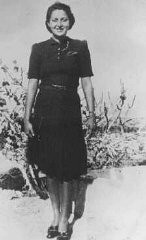
-
Elisabeth, Hans Werner, and Paul Gerhard Kusserow
PhotoElisabeth, Hans Werner, and Paul Gerhard Kusserow. Because they were the children of Jehovah's Witnesses, all three were forcibly removed from school on March 7, 1939, and kept separated from their family, which was accused of spiritual and moral neglect, until their liberation in April 1945. This photograph was taken at the Kusserow home in Bad Lippspringe, 1936-1939.
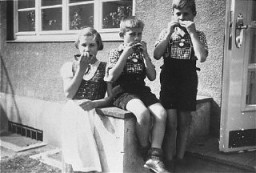
-
Liberated Soviet and Polish prisoners at Mauthausen
PhotoSoviet and Polish prisoners with disabilities stand in front of a tank of the 11th Armored Division, US Third Army. This photograph was taken at the Mauthausen concentration camp immediately after liberation. Austria, May 5–7, 1945.
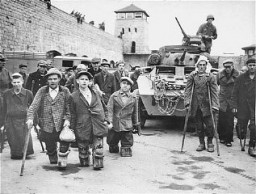
-
Anonymous Girl Diarist from the Lodz Ghetto
ArticleDiaries bear witness to some of the most heartbreaking experiences of the Holocaust. Read excerpts from the diary of an anonymous child in the Lodz ghetto.
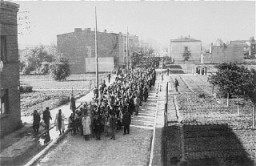
-
Tunisia Campaign
ArticleLearn more about the 1943 Tunisia campaign, a four-month long struggle between Allied and Axis powers in North Africa during World War II.
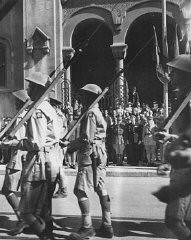
-
World War II in Eastern Europe, 1942–1945
ArticleBefore 1942, Nazi Germany had expanded across much of Europe. Learn more about major Allied victories in eastern Europe that led to the German surrender.
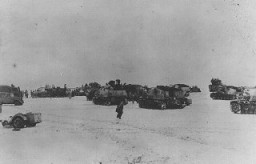
-
Fire Oaths
Article“Fire Oaths” were statements that declared why the works of certain authors were thrown into the flames during the 1933 burning of books under the Nazi regime.

-
The Rhine Crossings in World War II
ArticleCrossing the Rhine River allowed US and British troops to advance into the interior of Germany, helping to bring about the defeat of the Third Reich in WWII
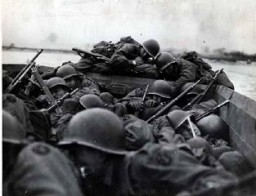
-
Jewish Uprisings in Camps
ArticleLearn more about Jewish prisoners and the various uprisings and armed resistance movements in killing centers and other Nazi camps.
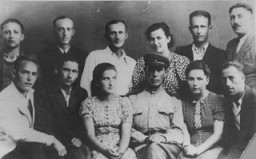
-
Deggendorf Displaced Persons Camp
ArticleAfter WWII, many Holocaust survivors, unable to return to their homes, lived in displaced persons camps in Germany, Austria, and Italy. Read about Deggendorf DP camp.
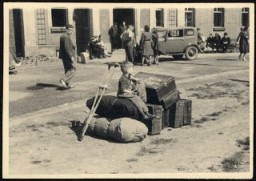
-
Rescue and Resistance
SeriesBrowse a series of articles describing how some Jews survived the Holocaust; rescue efforts; anti-Nazi resistance groups; and revolts against Nazi oppression in the Warsaw ghetto and in killing centers.
-
Hannah Szenes
Media EssayHannah Szenes (Senesh) was one of 32 Jewish volunteer parachutists from Palestine that the British Army sent behind German lines for resistance and rescue efforts. On June 7, 1944, Szenes infiltrated German-occupied Hungary. The Germans captured h...
-
Burial of victims of Wöbbelin
PhotoGerman civilians from Ludwigslust file past the corpses and graves of 200 prisoners from the nearby concentration camp of Wöbbelin. The US Army ordered the townspeople to bury the corpses on the palace grounds of the Archduke of Mecklenburg. Germany, May 7, 1945. Outraged by what they found upon entering the camp, the ranking Allied commanders in the area forced civilians from the nearby towns of Schwerin, Hagenow, and Ludwigslust to view the concentration camp and then bury the bodies of prisoners…
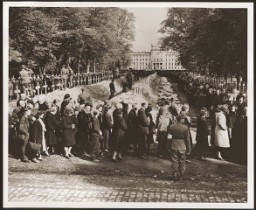
-
John Perry films US troops in Belgium
PhotoJohn Perry, a movie photographer with Unit 129, films GIs of the 290th Infantry Regiment, 75th Infantry Division, and 4th Cavalry Group ferreting out German snipers near Beffe, Belgium during the Battle of the Bulge. Twelve Germans were killed. The scene was photographed by Carmen Corrado of the 129th. January 7, 1945. US Army Signal Corps photograph taken by C.A. Corrado.
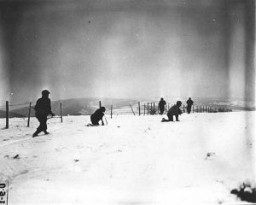
-
John Perry films US soldiers in Belgium
PhotoJohn Perry, a movie photographer with Unit 129, films GIs of the 290th Infantry Regiment, 75th Infantry Division, and 4th Cavalry Group ferreting out German snipers near Beffe, Belgium, in early January 1945. Twelve Germans were killed. The scene was photographed by Carmen Corrado of the 129th. January 7, 1945. US Army Signal Corps photograph taken by C.A. Corrado.
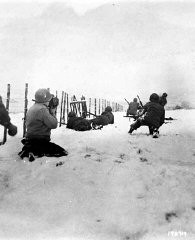
-
Jewish parachutist Hannah Szenes with her brother
PhotoJewish parachutist Hannah Szenes with her brother, before leaving for a rescue mission. Palestine, March 1944. Between 1943 and 1945, a group of Jewish men and women from Palestine who had volunteered to join the British army parachuted into German-occupied Europe. Their mission was to organize resistance to the Germans and aid in the rescue of Allied personnel. Hannah Szenes was among these volunteers. Szenes was captured in German-occupied Hungary and executed in Budapest on November 7,…

-
Auschwitz I camp, 1944
MapSelected Features 1. Camp Commandant's House 2. Main Guard House 3. Camp Administrative Office 4. Gestapo 5. Reception Building/Prisoner Registration 6. Kitchen 7. Gas Chamber and Crematorium 8. Storage Buildings and Workshops 9. Storage of Confiscated Belongings 10. Gravel Pit: Execution Site 11. Camp Orchestra Site 12. "Black Wall" Execution Site 13. Block 11: Punishment Bunker 14. Block 10: Medical Experiments 15. Gallows 16. Block Commander's Barracks 17. SS Hospital

-
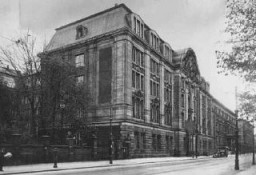
-
Wöbbelin
ArticleThe US 8th Infantry and the 82nd Airborne Divisions arrived at the Wöbbelin camp in May 1945, witnessing the deplorable living conditions in this subcamp of the Neuengamme concentration camp.
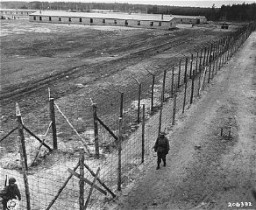
-
Capture of the Bridge at Remagen
ArticleCapturing the Ludendorff Bridge at Remagen was a major milestone for US forces in WWII, allowing the Allies to move troops and tanks across the Rhine river. Learn more.
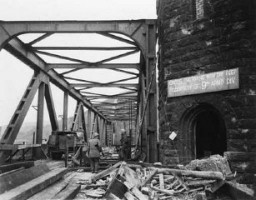
-
Subsequent Nuremberg Proceedings
ArticleAmerican military tribunals presided over 12 Subsequent Nuremberg Proceedings against leading German industrialists, military figures, SS perpetrators, and others.
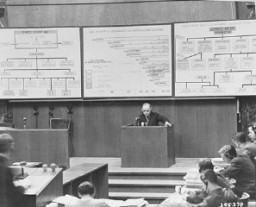
-
The 95th Infantry Division during World War II
ArticleThe 95th Infantry Division participated in major WWII campaigns and is recognized for liberating Werl, a prison and civilian labor camp, in 1945.
-
Lachwa
ArticleThe Lachwa ghetto was established in Łachwa, Poland in April, 1942. Learn more about the ghetto and uprising.

-
Bremen-Farge
ArticleLearn more about Bremen-Farge, a subcamp of Neuengamme where the majority of prisoners were used to construct an underground U-boat shipyard for the German navy.
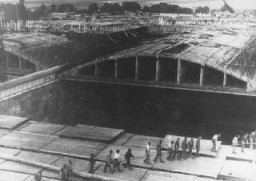
-
Antisemitic Legislation 1933–1939
ArticleHundreds of laws, decrees, guidelines, and regulations increasingly restricted the civil and human rights of Jews in Germany from 1933-39. Learn more.
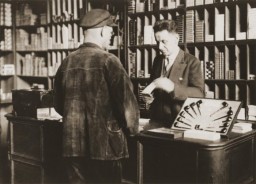
-
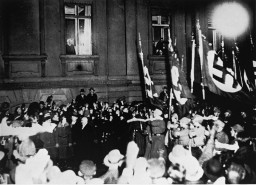
-
World War II in Europe
ArticleWorld War II lasted from 1939 to 1945, when the Allies defeated the Axis powers. Learn about key invasions and events during WWII, also known as the Second World War.
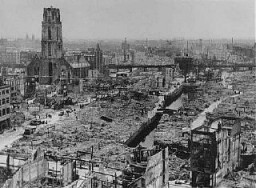
-
1944: Key Dates
ArticleExplore a timeline of key events during 1944 in the history of Nazi Germany, World War II, and the Holocaust.
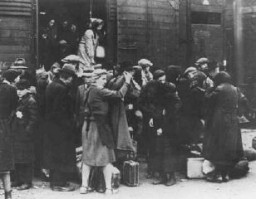
-
Prisoner Revolt at Auschwitz-Birkenau
Timeline EventOctober 7, 1944. On this date, the Sonderkommando working at Crematorium IV in Auschwitz-Birkenau rose in revolt.
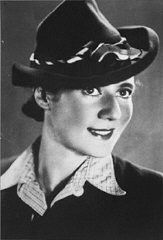
-
Nuremberg Race Laws
ArticleLearn more about the Reich Citizenship Law and the Law for the Protection of German Blood and German Honor, collectively known as the Nuremberg Race Laws.
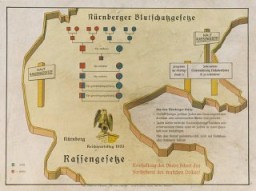
-
Page 5 of passport issued to Setty Sondheimer
DocumentPage 5 of a passport issued to Setty Sondheimer by the German Consulate in Kovno on January 29, 1938. This page contains three visas: (1) visa for Kovno valid from August 27, 1940, until December 31, 1940 (2) a second visa for Kovno valid until June 30, 1941, and (3) first visa for Yokohama, Japan, valid from June 7, 1941, until June 30, 1942. Unable to emigrate from Japan, Setty remained there until she was able to emigrate to the United States in 1947. [From the USHMM special exhibition Flight and…
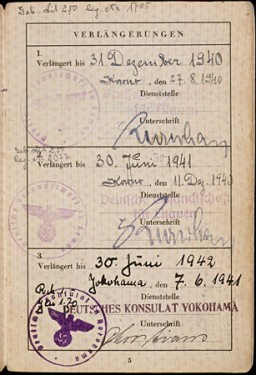
-
The United States and the Holocaust
ArticleHow did the United States respond to the Holocaust and World War II? Start learning today.

-
Western Desert Campaign: Egypt and Libya
ArticleLearn more about the Western Desert campaign during World War II in Egypt and Libya between 1940-1943.

-
Reinhard Heydrich: Key Dates
ArticleKey dates in the life of Reinhard Heydrich, chief of the Reich Security Main Office, the SS and police agency most directly concerned with implementing Final Solution.
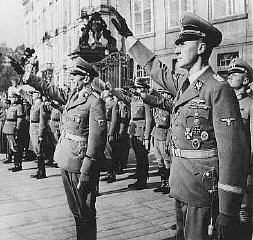
-
Jewish Uprisings in Ghettos and Camps, 1941–44
ArticleUnder the most adverse conditions, Jewish prisoners initiated resistance and uprisings in some of the ghettos and camps, including Bialystok, Warsaw, Treblinka, and Sobibor.
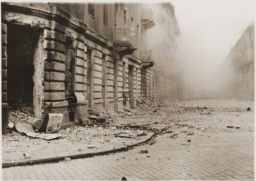
-
German Prewar Expansion
ArticleAdolf Hitler was determined to overturn the military and territorial provisions of the Treaty of Versailles. Learn more about Nazi German territorial aggression before WWII.
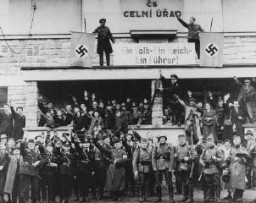
-
Lend-Lease
ArticleLearn more about the Lend-Lease Act, which was the American policy that extended material aid to the WWII Allied powers from 1941-1945.
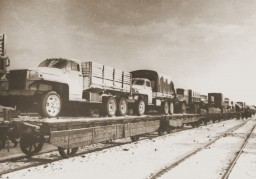
-
Nazi Camp System
ArticleMost prisoners in the early Nazi camp system were political opponents of the regime. The system would grow to include other types of camps, including killing centers.
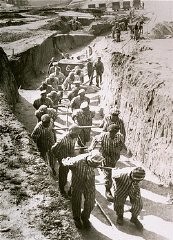
-
Rwanda: The First Conviction for Genocide
ArticleThe first conviction for the crime of genocide came after the 1994 genocide in Rwanda, when Jean-Paul Akayesu was found guilty of genocide and crimes against humanity.
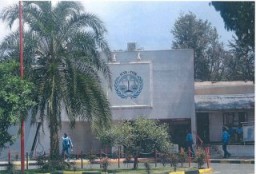
-
Abba Kovner
ArticleRead the Jewish Partisan Educational Foundation's short biography of Abba Kovner.
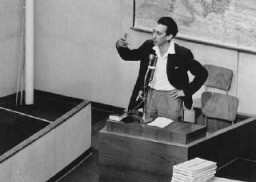
-
Rae Kushner
ArticleRead the Jewish Partisan Educational Foundation's short biography of Rae Kushner.
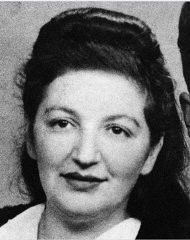
-
German Surrender
Timeline EventMay 7, 1945. On this date, German armed forces surrendered unconditionally to Allied forces in the west.
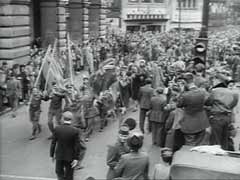
-
The 82nd Airborne Division during World War II
ArticleThe 82nd Airborne Division participated in major WWII campaigns and is recognized for liberating the Wöbbelin subcamp of Neuengamme in 1945.
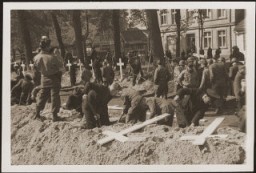
-
The 2nd Infantry Division during World War II
ArticleThe 2nd Infantry Division participated in major WWII campaigns and is recognized for liberating Leipzig-Schönefeld and Spergau/Zöschen in 1945.
-
The 9th Armored Division during World War II
ArticleThe 9th Armored Division participated in major WWII campaigns and is recognized for liberating Zwodau and Falkenau an der Eger, Flossenbürg subcamps, in 1945.
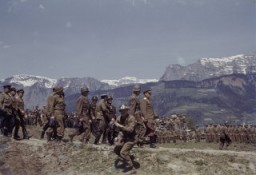
-
Lithuania
ArticleAs part of the Holocaust, the Germans murdered about 90% of Jews in Lithuania. Read more about the tragic experience of Lithuanian Jews during World War II.
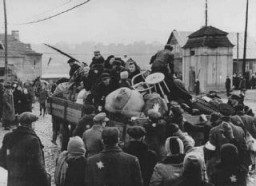
-
World War II: In Depth
ArticleGermany started World War II in Europe on September 1, 1939, by invading Poland. War would continue until 1945. Learn more about key events in the history of WWII.
